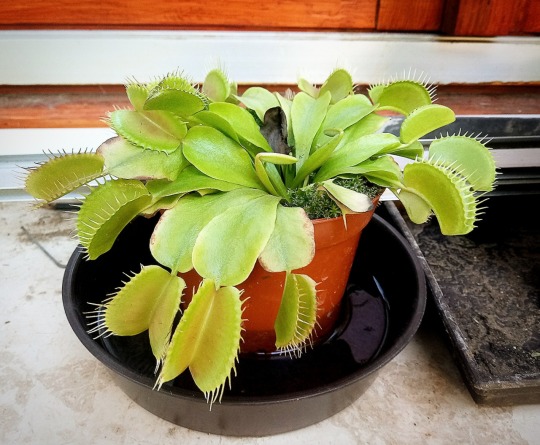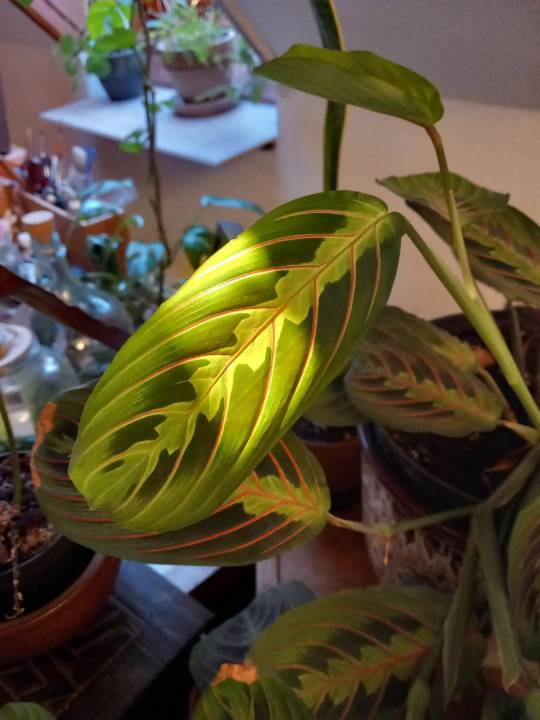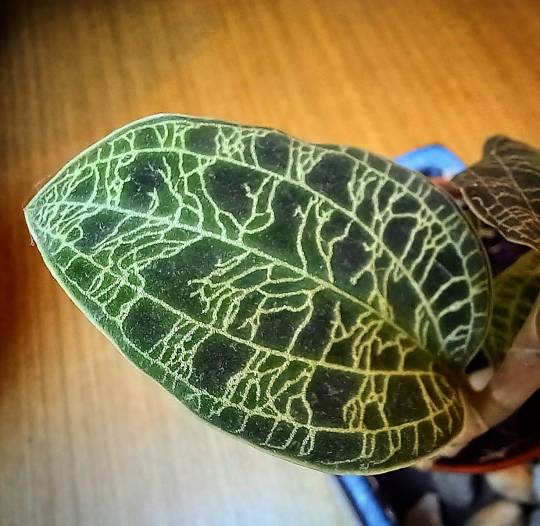#venus pudica
Photo

Lily McMenamy | Marc Jacobs, Runway Look for Fall 2013 ready-to-wear collection
VS
Venus Pudica, Type Capitol, 4th century AD
#Lily McMenamy#mj#marc jacobs#runway#fashion#clothes#clothing#ready-to-wear#venus#venus pudica#Aphrodite#statue#sculpture#marble#classic#classical#classic art#altes museum
106 notes
·
View notes
Text


Torso of Venus pudica. Roman, I-II centuries A.D.
Marble. (polished 18th-19th century)
825 notes
·
View notes
Text
VENUS VANITAS
“The truth is that in this house with its four walls of glass I feel like a prowling animal, always on the alert. I am always restless.” —Edith Farnsworth
The house in the castle in the drawing above resembles Edith Farnsworth’s respite from the sound, fury and idiots of her work life in the city. It was built in 1951 for the wealthy Chicago MD, poet and violinist, from a design by…

View On WordPress
#alienation#art#culture#dark romantic#dutch golden age#farnsworth#glass house#mies van der rohe#modernism#nature#neo gothic#resistance is futile#society#sublimation#vanitas#venus pudica
1 note
·
View note
Text
while source hunting i found "Determined Raptures": St. Sebastian and the Victorian Discourse of Decadence by Richard A. Kaye which i think is about what i was talking about a few months ago abt st sebastian always being drawn sexually, but it goes into why which is cool
link to me going on abt st sebastian always being so erotic that is mostly for me because i keep losing it and i need a link or else it will be lost forever
#apparently he's a homoerotic icon which. i am not surprised ngl#i also found “Wantoning with the Thighs”: The Socialization of Thigh Sex in England 1590-1730 by Will Fisher#which.#is interesting#anyway let's talk about my day because i want to#i've gathered a lot of sources for my eroticism paper and had a genius bigbrain moment where i realized michelangelo's dying slave#could maybe be a venus pudica (specific pose typically reserved for venus-like figures. aka “modest” venus)#and i was like. yippee!! that's inherently sexual!!!! and it came from my brain so i don't have to cite it#also someone came up to me curious to what i was doing (bc i am spread across a large table w a lot of papers and i keep staring at#michelangelo's slave sculptures. and i have been. for four hours)#and i was like. i'm doing research and it was cool. they like art hist too. yay#also today was my last forensic psych class :((#so sad. i love that class to death#also i almost got run over by a stupid fucking driver again!!!! >:(#this is because a main pathway for psych students in particular has so many blindspots and The Crosswalk is hiding from drivers#so they just hit the gas and hope no-one's crossing. but i am!!!! pay attention to your surroundings in a moderately high-foot-traffic area
12 notes
·
View notes
Text
Action potentials have been shown to meditate touch-induced leaflet closure in sensitive plant (Mimosa pudica), as well as the rapid closure (~0.1 s) of Venus flytrap, which occurs when an insect touches the sensitive hairs on the upper sides of the traplike leaf lobes (Figure 15.27A). (...) Since each displacement elicits an action potential (Figure 15.27B), the leaf must have a mechanism for counting action potentials.

"Plant Physiology and Development" int'l 6e - Taiz, L., Zeiger, E., Møller, I.M., Murphy, A.
#book quotes#plant physiology and development#nonfiction#textbook#electrical signaling#action potential#sensitive plant#mimosa pudica#venus fly trap#dionaea muscipula#touch sensitive#bioelectricity
6 notes
·
View notes
Text
Plants for the chronic over-waterer
So you’ll often see guides and rec-lists for plants that require little water and attention, and just generally ‘thrive on neglect’. But what about us anxious, hovering plant people whose most common way of accidentally offing a plant is by over-loving and over-watering them?
(Before we get into it, let me preface this by the usual disclaimer: a plant’s water needs wildly depend on its environment. I live in the continental temperate zone of Europe, the average humidity level inside is 30-40%, so what I write may or may not apply to your conditions. Watch your plants closely - if you’re reading this post I know you would anyway - and proceed accordingly.)
Look no further, here’s a list of plants that are virtually impossible to over-water:
Fittonia sp.

Fittonia are extreme divas in room conditions but perfect angels in a terrarium. They will not tolerate a missed watering day, they’ll immediately start to droop. If you’re lucky and you catch them in time they’ll perk up and go on like nothing happened, but the margin between this and irrevocable crisping is a slim one.
Ferns in general

Of course the details of care depend on the species, but most ferns prefer shade and hate to dry out. I usually water all of mine twice a week, and so far they are doing okay.
Dionaea muscipula - Venus flytrap (and most carnivorous plants)

Plants usually resort to eating animals when they live in bogs, where the soil is acidic and extremely poor in nutrients. What bogs also are, is wet, and so these plants need to literally stand in a pool of water all day, every day and are therefore quite literally impossible to over-water. (At least in the summer. Over-wintering depends on whether the plant is temperate or tropical.)
The only downside is that they are really sensitive to water quality. No minerals (and no fertilizer!) allowed, only rain or distilled water!
Marantha leuconeura

Honestly I’d say the entire Maranthaceae counts, but I only have experience with Marantha, and I’m told the rest (like Calathea) are more difficult. These, once you get the water right (twice a week for me), aren’t that bad. They don’t need a lot of light either.
What you do have to keep in mind, is to give them soft water - like collected rain water. They are sensitive to the minerals in the tap water and since they can’t properly secrete them, they’ll store them away in the tips of their leaves, which will thus crisp up.
Jewel orchids

The one I have (Macodes petola) does well in a shadier spot, in normal room conditions. I mean I do run a humidifier once a day, but it’s not in a terrarium. It’d do well in one though, so if you’re looking to furnish a terrarium, this is a good choice. The only thing you gotta keep in mind if you keep it out in your room is to always keep the soil moist.
Mimosa pudica

This is a fun and interesting plant, what with the cute moving leaves, but it is the divaest of all divas. On a sunny, dry summer day it may have to be watered twice a day, and it’ll go into hysterics, crisp up and throw leaves if you’re late by five minutes. The good news is that as long as you do get around to watering it, it’ll bring new shoots and keep growing, it’ll just litter your room with dead leaves in protest.
It also prefers lots of light.
Spathipyllum sp. - Peace Lily

Like ferns, these do well in shadier spots. If exposed to too much light, they’ll keep bringing small, light green leaves, but they’ll flower regularly. (They feel like their lives are in danger so they hurry to procreate before the end.) In the winter they need to be watered about once a week, in the summer more like every two days.
The nice thing about them is that they are very vocal about their needs but, unlike the Mimosa and the Fittonia, don’t immediately, irrevocably crisp up, they’ll just droop. Water them and they’ll perk right back up.
#plant posting#plantblr#plant care#plant community#plant collection#houseplants#indoor plants#fittonia#peace lily#fern#carnivourousplant#marantha#orchid#mimosa
73 notes
·
View notes
Photo

eucanthos
_
Venere Pudica ma non troppo no.2
Sandro Botticelli Venere (Venus) 1 & 2, & Lorenzo di Credi Venus, ca. 1490 & Bronzino Venus, Cupid and Envy, ca. 1560 (bust)
Crossing hands, Botticelli [L] and Credi [R], front leg nude from vintage African Postcard
107 notes
·
View notes
Text

Dante Gabriel Rossetti’s Astarte Syriaca has an accompanying sonnet:
MYSTERY: lo! betwixt the sun and moon
Astarte of the Syrians: Venus Queen
Ere Aphrodite was. In silver sheen
Her twofold girdle clasps the infinite boon
Of bliss whereof the heaven and earth commune:
And from her neck’s inclining flower-stem lean
Love-freighted lips and absolute eyes that wean
The pulse of hearts to the spheres’ dominant tune.
Torch-bearing, her sweet ministers compel
All thrones of light beyond the sky and sea
The witnesses of Beauty’s face to be:
That face, of Love’s all-penetrative spell
Amulet, talisman, and oracle,—
Betwixt the sun and moon a mystery.
The Rossetti archive notes: “Venus stands in a traditional ‘pudica’ pose, and distinctly recalls Botticelli’s famous Venus, though DGR’s treatment is more imposing than graceful.” This version of the pose, in which the woman covers her pubis and sometimes breasts with her hands, seems especially fitting to me for a goddess who was frequently depicted lifting her breasts as if celebrating her own body. (That link goes to images of Ishtar, cognate with Astarte.) I don’t know if those depictions of Ishtar would have been known in Rossetti’s time, but clearly her symbol - the 8 pointed star - was.
9 notes
·
View notes
Text
Kinktober, Day 6

Day 6: Chastity
Inspired by "Venere Landolina", I needed to draw the concept of Venus Pudica
1 note
·
View note
Note
Have you had any submissions for carnivorous plants?
Oh, good question ! (More below)

Already submitted at least once :
Ivy Sundew from Amphibia
Sundew from Wings of Fire
Venus McFlytrap from Monster High
A few others who could be submitted :
Traptrix Dionaea, Traptrix Nepenthes, Traptrix Cularia, Traptrix Genlisea, Traptrix Pinguicula, Traptrix Pudica, Traptrix Rafflesia, Traptrix Vesiculo, from Yu-Gi-Oh !
Ruffresia (english version : Vileplume) and Muskippa (english version : Carnivine) from Pokémon
Queen Rafflesia from Toki no Wa
4 notes
·
View notes
Text
uhm uhm uhm uhm mimosa pudica aka creeping annual is so silly funny and youve probably heard it before bc THIS GUY

the plant that fucking dies (not really) when you touch it. it closes its leaves when touched/at night. works in the same way as venus flytraps actually theyre in that same group :)! used a bunch for experiments regarding memory and thats cool
9 notes
·
View notes
Text


Madonna Pudica (the modest) // Мадонна Пудика (стыдливая)
2 vers
You can look up Venus Pudica and Madonna with the Long Neck 😌
0 notes
Text

After an entire month of working on these I finally finished my OCs refs just in time for artfight!



As a quick introduction for anyone who's mildly interested.. ;w;
First gal here is Venus, she's designed after the venus flytrap and is a pesky and stubborn gal desperate for a life of meaning and excitement.
Second lad is Wheatly, he's designed after bread wheat and is a grumpy, anxiety riddled scarecrow with a skill for "scamming legally" and a desire for worth.
Last but not least is Pudica, she's designed after Mimosa flowers and is a blunt, doll like lady with bad acne and a love for the art of weaponry.
These beans have been in the works for years and indeed have went under an insane amount of changes lol, I have a ton more I'd like to show off, all based on more plants of course!
Anyways, let's go team vampires!!!
#ocs#oc reference#artfight#artfight ref#original character#My art#Lineless art#Plantae#Would like to make lil comics/art pieces with them.. however probably not any time soon cause procrastination lives under my pillow
1 note
·
View note
Text

META VENUS
Venus pudica, the pure form of the goddess of Love, prosperity, and victory appears in a new world.
This piece started the New Renaissance collection.
0 notes
Text
¿Sobre qué hablan las plantas cuando charlan entre ellas?
Los animales no son los únicos que tienen el don de la palabra. Pero, ¿qué se "dicen" las plantas entre sí? La respuesta podría ayudar a alimentar al mundo.

Esta exposición en Brujas (Bélgica) celebra las redes que conectan árboles y otras plantas a través de hongos subterráneos. Es sólo una de las formas en que las plantas pueden "hablar" entre sí y con organismos que van desde los microbios hasta animales como nosotros. FOTOGRAFÍA DE SYLVAIN LEFEVRE, GETTY IMAGES
"¡Ayuda!" "¡Aterrizad aquí!" "¡Conservar recursos!" "¡Fuera!" "¡Mis frutos están listos para comer!"
Éstos son sólo algunos de los muchos mensajes que sabemos que las plantas (desde un trozo de musgo hasta una secuoya de 90 metros) pueden enviar. De hecho, si alguna vez has olido la hierba recién cortada, te has comunicado con una planta.
"Creo que estamos viendo que la complejidad [de la comunicación] es tan grande en las plantas como en los animales", afirma Mamta Rawat, microbióloga y directora de programa en la Fundación Nacional de la Ciencia (NSF) de Estados Unidos. "Creo que queda mucho por aprender; apenas estamos tocando la punta del iceberg".
En marzo, un nuevo estudio demostró que muchas especies vegetales diferentes emiten sonidos ultrasónicos para comunicar el estrés. Es la última prueba de que las plantas "hablan" con todo, desde depredadores a polinizadores.
Esta investigación tiene una utilidad importante. Entender cómo se comunican las plantas podría ayudarnos a aumentar las tierras cultivables para alimentar a nuestra creciente población y adaptarnos al cambio climático.
Lo he oído por ahí
Para reaccionar ante su entorno, una planta debe comunicarse entre sus raíces, tallos, hojas, flores y frutos.
En lugar de que las señales se muevan a través de un sistema nervioso como el nuestro, Simon Gilroy, catedrático de Botánica de la Universidad de Wisconsin-Madison, dice que en las plantas es más parecido a la fontanería.
Las hojas detectan depredadores o cambios en la luz y el sonido, y las raíces vigilan las condiciones del subsuelo: los problemas con los nutrientes, el agua y los depredadores también podrían estar ahí.
Las señales eléctricas viajan a través del movimiento de sustancias químicas en esos tubos, explica Courtney Jahn, bióloga y directora de programas de la NSF que estudia las interacciones entre plantas. Por ejemplo, las raíces pueden detectar la sequía e indicar a las hojas que limiten la transpiración y ahorren agua.
Los investigadores pueden observar esta comunicación eléctrica colocando electrodos en dos lugares distintos de una planta. Incluso hemos fabricado instrumentos (como éste) que pueden traducir esa carga eléctrica en sonidos que podemos oír. Según Gilroy, si una planta se hiere, de esa herida emanan señales eléctricas. Y las plantas pueden transmitir estas señales eléctricas entre individuos si se están tocando.
Tanto las venus atrapamoscas como las plantas sensibles (Mimosa pudica) transmiten señales eléctricas cuando se tocan, afirma Jahn. La primera cierra la boca para atrapar a su presa, mientras que la planta sensible se mueve para sacudirse a los insectos.
Las sustancias químicas, incluidas las hormonas, también viajan dentro de una planta.
Una hormona llamada auxina se produce en la parte superior de la planta y viaja hacia abajo, indicando a un brote que intenta abrirse paso a través de la superficie del suelo cuál es el camino hacia arriba. Cuando hay una amenaza urgente, como la depredación de los insectos, la planta debe reaccionar rápidamente o se consumirá por completo. Muchas plantas sometidas a este tipo de estrés envían la hormona ácido jasmónico, que le indica a la planta que empiece a producir una toxina para defenderse.
Algunas especies pueden detectar plantas que responden al peligro (un ratón podría "oírlo", un insecto podría "olerlo"), como oír a alguien gritar "¡ay!" en la distancia. Es difícil saber si esas señales ocurren sin más o si están pensadas para que otros las reciban.
Gritarlo a los cuatro vientos
Comunicarse con el entorno puede ayudar a las plantas a sobrevivir. Las llamativas flores que germinan en primavera envían un mensaje a insectos y animales para indicarles que están listas para la polinización.
Los investigadores han descubierto que con unos micrófonos especiales que detectan las llamadas de los murciélagos, también se puede oír a las plantas. Una amplia gama de especies, desde tomates a cactus, emiten sonidos ultrasónicos cuando están estresadas, que pueden oír insectos como las polillas y mamíferos como murciélagos y ratones. Los científicos escuchan estos sonidos de angustia para encontrar nuevos métodos de diagnosticar, tratar y vigilar las plantas sin tocarlas.

Los musgos (como éste del Parque Etnobotánico Omora, en Chile) son uno de los muchos tipos de plantas que forman relaciones simbióticas con los hongos. Los musgos aportan azúcares que fabrican mediante fotosíntesis, y los hongos dan nutrientes a los musgos. FOTOGRAFÍA DE ALBERTO PEÑA, AFP, GETTY IMAGES
Puede que los humanos no seamos capaces de oírlos de forma natural, pero a menudo podemos oler los mensajes de las plantas. Cuando se corta la hierba, libera sustancias químicas gaseosas, una fragante señal de socorro. Es un olor reconfortante para quienes lo asociamos con estar al aire libre en los meses más cálidos. Las plantas también liberan este olor cuando se las come una oruga y, como si respondieran a su llamada de auxilio, otros insectos se dan cuenta y se alimentan de ellas.
Esta señal olorosa pertenece a un grupo de sustancias químicas llamadas volátiles, que pueden viajar lejos en forma de gases tanto por encima como por debajo del suelo. Cada especie vegetal tiene su propia mezcla especial de compuestos volátiles.
Natalia Dudareva, bioquímica de la Universidad de Purdue (Estados Unidos), afirma que estos compuestos volátiles tienen muchas funciones diferentes. Los volátiles pueden atraer a los polinizadores cuando una flor está lista, e incluso dirigirlos a las flores que quedan sin polinizar. Los volátiles de los frutos atraen a los organismos que comerán y distribuirán las semillas. También se envían desde las hojas para "intoxicar" y ahuyentar a los depredadores (piensa en cómo reaccionas cuando estás junto a alguien que lleva demasiado perfume).
Los investigadores también han descubierto que las plantas pueden enviar mensajes a través de los volátiles sobre amenazas específicas a las que se enfrentan, como la depredación. Se ha observado que las plantas vecinas de una planta que emite volátiles se preparan para defenderse de una amenaza antes de sufrirla ellas mismas.
Las plantas también pueden detectar a sus parientes y no parientes mediante volátiles y cambiar su comportamiento en consecuencia. Por ejemplo, las plantas detectan a sus crías y las ayudan a crecer en lugar de competir con ellas por los recursos, explica Andrea Clavijo McCormick, investigadora de la Escuela de Agricultura y Medio Ambiente de la Universidad de Massey (Nueva Zelanda).
Las plantas también liberan volátiles bajo tierra. Especialmente frecuentes en los bosques, las plantas envían una señal de "ven aquí" a los hongos subterráneos, que envuelven la raíz. Muchos hongos pueden estirarse y recoger nutrientes, devolviéndoselos a la planta a cambio del azúcar que ésta produce mediante la fotosíntesis.
Mantengamos el contacto
Un árbol de un bosque se relaciona con muchos hongos distintos, y un hongo se relaciona con muchos árboles distintos, conectándolos en una red micorrícica (myco significa hongo, rhizal significa raíz), explica Cathie Aime, catedrática de micología de la Universidad de Purdue y directora rotatoria del programa en la NSF.
Donde el hongo se encuentra con la raíz se producen interesantes "conversaciones". Se ha observado que ambas partes intercambian pequeños fragmentos de ARN que alteran la expresión génica del otro organismo. Si el hongo es un aliado, dice: "puedes confiar en mí", y ayuda a la planta a crecer. Si el hongo es un enemigo, el pequeño ARN del hongo desactiva los genes defensivos de la planta, lo que facilita el ataque del hongo, dice Rawat.
Cuando varios árboles están conectados por un hongo, pueden compartir recursos. Se ha comprobado que el carbono pasa de un árbol "nodriza" más viejo a otro más joven que es demasiado joven para obtener una buena fuente de luz y hacer la fotosíntesis.
Bajo tierra, las plantas también se comunican con los microbios. Al igual que los hongos, se sienten atraídos por las raíces y se adhieren formando una biopelícula. Por ejemplo, las bacterias que favorecen el crecimiento pueden preparar las defensas de la planta, aumentando su resistencia a las enfermedades.
La investigación sobre el microbioma de las plantas bajo tierra está madura para la exploración, y los hallazgos podrían ayudarnos a enriquecer el suelo para alimentar a nuestra creciente población.
Fuente: https://www.nationalgeographic.es/
1 note
·
View note

